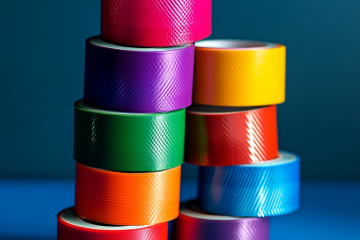
DIY Faraday potential metal containers
When it comes to making your own small, or not-so-small DIY Faraday cage, choosing the right metal container is crucial for ensuring maximum effectiveness in blocking electromagnetic interference. Here are some ideas for metal containers that are both practical and readily available:
- Metal Trash Can
A metal trash can, especially one with a tight-fitting lid, is a popular choice for a larger Faraday cage. It’s spacious enough to store multiple devices and can easily be lined with insulating material. And they’re still moderately portable.
- Ammo Box
Ammo boxes are sturdy, secure, and often come with a tight seal, making them ideal for a DIY Faraday cage. They’re also portable, which is great if you need to move your protected items around.
- Old Filing Cabinet
An old metal filing cabinet can be repurposed into a large Faraday cage, perfect for protecting larger items or a collection of smaller electronics. Ensure the drawers close tightly and consider adding conductive tape to any gaps. Not as portable as your other options though.
- Metal Cookie Tin
For smaller items like USB drives, credit cards, or small gadgets, a metal cookie tin can be an excellent Faraday cage. They’re easy to find and usually come with a snug-fitting lid. Be sure to remove the cookies before using or someone will always be getting into the tin. Ha!
- Tool Box
A metal tool box can be repurposed into a durable and portable Faraday cage. They often have a secure latch and are available in various sizes. This is my favorite.
- Aluminum Briefcase
An aluminum briefcase, often used for carrying sensitive equipment, can double as a Faraday cage. The built-in padding provides extra protection for your devices. You’ll look really cook carrying one of these around.

Biscuit tins for DIY Faraday Cage
- Coffee Can
A metal coffee can, especially those with a plastic lid, can be used to protect smaller items. Just make sure to replace the plastic lid with a metal one or wrap the opening with aluminum foil for better shielding. The ones made in Europe still come with metal lids.
- Metal Biscuit Tin
Similar to a cookie tin, a metal biscuit tin is great for smaller items. These tins usually have tight-fitting lids, making them effective for blocking electromagnetic interference. You can find collectible tins that come with metal lids.
- Metal Tool Chest
For a more extensive collection of electronics, a metal tool chest provides ample space and a sturdy build. Ensure the drawers and lids close securely.
- Popcorn Tin
Those decorative popcorn tins you get around the holidays can also serve as Faraday cages. They’re large enough for several devices and have a tight-fitting lid.
- Steel Drum
For the ultimate in protection, a steel drum with a removable lid can house a significant amount of electronics. These are especially useful for long-term storage and protection against severe EMPs.
Ah, you’ve noticed the absence of a microwave that you’re always hearing about. Tune in to the next blog issue and I’ll talk about that issue specifically when it comes to making a DIY Faraday cage out of a microwave oven.

DIY Faraday Cage version 2
Tips for Choosing a Metal Container for a DIY Faraday Cage
- Tight Seal: Ensure the container has a tight-fitting lid to prevent any gaps where electromagnetic waves could enter.
- Condition: The container should be free of holes, rust, or significant dents that could compromise its shielding capabilities.
- Size: Choose a size that fits your needs. Larger containers can protect multiple items, while smaller ones are good for individual gadgets.
- Portability: Consider how easy it is to move the container if you need portable protection.
With these ideas, you can find the perfect metal container to suit your needs and start building your own effective DIY Faraday cage. Peaceful building! See you tomorrow.


